USS Lexington (CV-2)
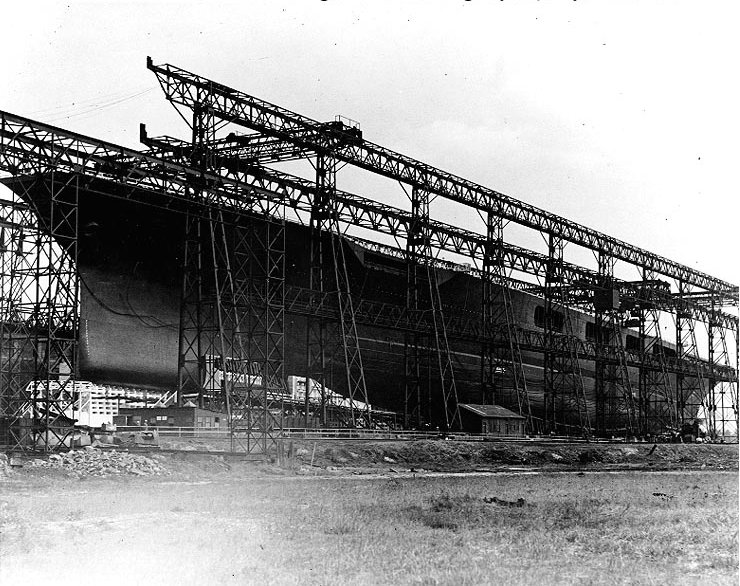
Initially laid down in 1916 as a battlecruiser, the USS Lexington’s fate shifted dramatically after the Washington Naval Treaty of 1922 halted construction of such warships. Instead of scrapping the project, the Navy redesigned her into one of its first operational aircraft carriers. When she entered service on December 14, 1927, sailors quickly dubbed her “Lady Lex,” a name that reflected both respect and familiarity. Emerging in an era of relative peace, the carrier became a flexible tool for naval innovation, testing new strategies and even staging mock assaults on Pearl Harbor.
Her value extended beyond combat readiness—during a severe drought in 1929 and 1930, Lexington supplied electricity to Tacoma, Washington. She later supported humanitarian relief as well, carrying doctors, nurses, and supplies to assist victims of the 1931 earthquake in Managua, Nicaragua.
The USS Lexington‘s (CV-2) service during World War II
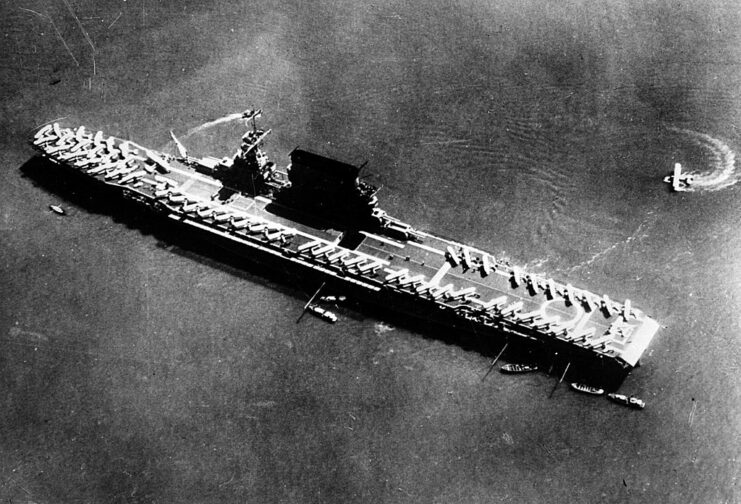
During the Japanese attack on Pearl Harbor in December 1941, the USS Lexington was en route to Midway Island, transporting fighter aircraft. Swiftly recalled to base, her first mission of World War II initially involved an attack on Japanese targets in the Marshall Islands, aimed at diverting attention from the besieged Wake Island. However, the surrender of the US forces stationed there negated the need for such action.
In early 1942, Lexington was deployed to the Coral Sea, where she spent the majority of her remaining service. Positioned to counter Japanese advancements in the region, she, along with the USS Yorktown (CV-5), engaged enemy shipping near New Guinea.
Following a refit at Pearl Harbor, Lexington returned to the Coral Sea that May. Her timely return proved crucial, coinciding with the Japanese launch of Operation Mo just days later.
Battle of the Coral Sea
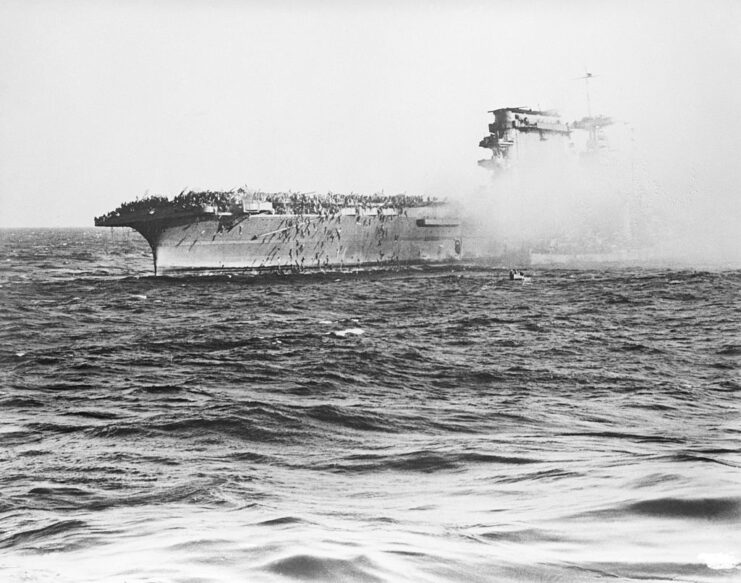
The commencement of Operation Mo signaled the onset of the Battle of the Coral Sea, where the USS Lexington, Yorktown and their carrier aircraft defended the area against attacking Japanese vessels. Intercepting their plans to seize Port Moresby, this engagement was unique in that it marked the first sea battle where the combatant ships didn’t come within range of each other. Instead, they waged the battle using their aircraft.
On May 7, 1942, Lexington‘s aerial fleet sank the Japanese light aircraft carrier Shōhō. Deploying bombs and torpedoes, they initiated the attack by setting fire to the aircraft on the vessel’s flight deck, subsequently disabling her power and steering. With the continued assault, Shōhō began to flood. With the assistance of Yorktown‘s aircraft, the carrier ultimately sank at 11:31 AM, accompanied by the famous call from Lt. Cmdr. Robert E. Dixon, “Scratch one flat top!”
A turn for the worse
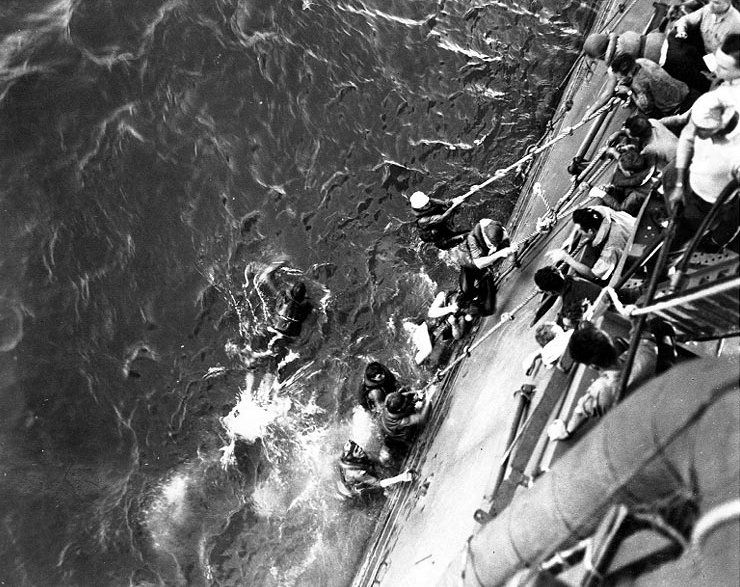
News of the USS Lexington’s initial victories quickly reached the nearby Japanese fleet, spurring Rear Admiral Chūichi “King Kong” Hara to launch a retaliatory wave of airstrikes. However, the American defenses held strong, shooting down multiple Japanese planes before they could deal significant damage.
Wreck of the USS Lexington (CV-2)

In the ensuing hours, relentless attacks persisted against the USS Lexington. Impressively, she managed to refuel a considerable number of her aircraft. However, at 2:42 PM, an explosion severed all power to the ship’s front, intensifying the fires that raged aboard the carrier. Capt. Frederick Sherman issued the order for the crew to abandon ship at 5:07 PM, ensuring everyone who could be evacuated was safely removed before he followed suit at 6:30 PM.
The difficult decision was made to scuttle Lexington, to prevent the Japanese from seizing the vessel. Tasked with this mission, the USS Phelps (DD-360) launched five torpedoes, all of which found their mark, leading to the aircraft carrier’s sinking, along with 35 of her aircraft.
The majority of the crew successfully escaped, with reports indicating that 2,735 were evacuated, while 216 tragically lost their lives. Despite the heavy toll, the resolute defensive stand made by the USS Yorktown and Lexington bore immense significance. This stance thwarted the Japanese carriers from reaching New Guinea and Australia, thus preventing their involvement in the Battle of Midway.
The wreck of the USS Lexington (CV-2) is discovered near Australia
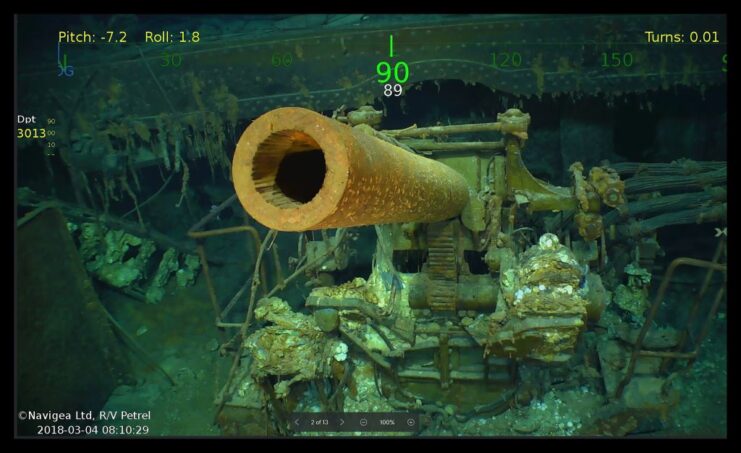
Although the coordinates of the USS Lexington’s (CV-2) scuttling were recorded in 1942, her final resting place was undiscovered for decades. That changed on March 4, 2018, when an exhaustive six-month search finally revealed the location of the lost carrier.
The expedition was led by Microsoft co-founder Paul Allen, whose research team aboard the vessel Petrel set out to find the wreck. Their mission succeeded roughly 800 kilometers off the coast of Queensland, Australia, where Lexington was found resting nearly 3,000 meters below the surface.
Using a remotely operated vehicle (ROV), the team confirmed the ship’s identity, sending live video back to Petrel. The ROV captured the nameplate on the stern and revealed that the carrier had broken apart into several large sections lying close together. Among the debris field, researchers also identified 11 aircraft—three Douglas SBD Dauntless dive bombers, seven TBD Devastator torpedo planes, and one Grumman F4F Wildcat fighter—silent witnesses to the battle that sent the “Lady Lex” to her watery grave.
